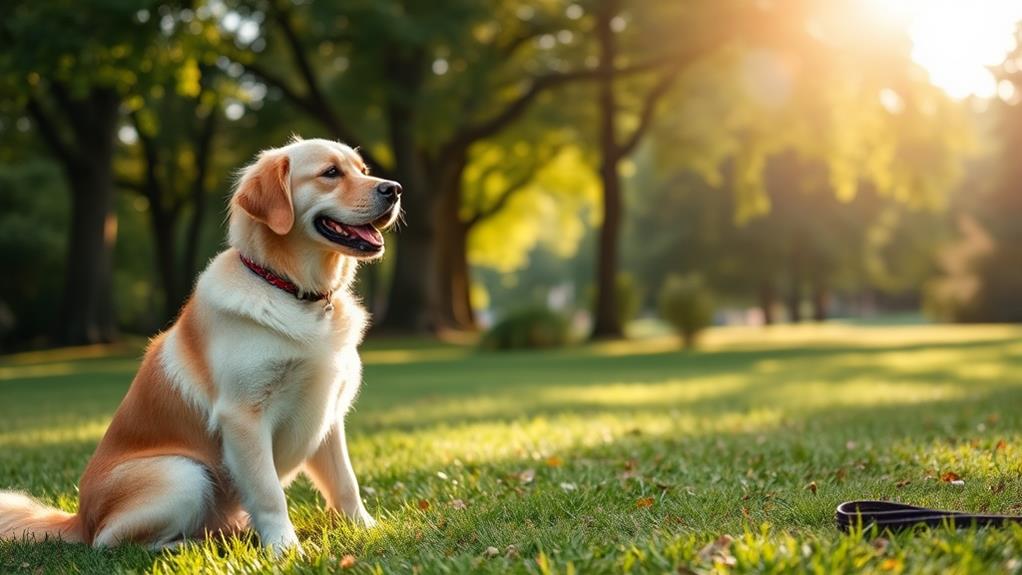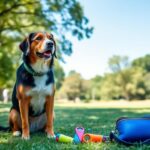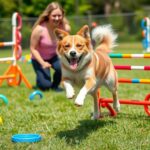Training older pups can be a rewarding experience if you follow some proven tips. Start with positive reinforcement, rewarding good behavior with treats or praise. Keep training sessions short, about 5-10 minutes, to hold their attention. Choose a calm environment for initial training, gradually introducing distractions. Daily exercise is key for their physical and mental health, so include walks and playtime. Focus on socialization with other dogs and new experiences. Use familiar items to make training comfortable. Set realistic goals based on their abilities and monitor their health to tailor the approach. You'll discover even more helpful techniques ahead.
Be Patient and Consistent
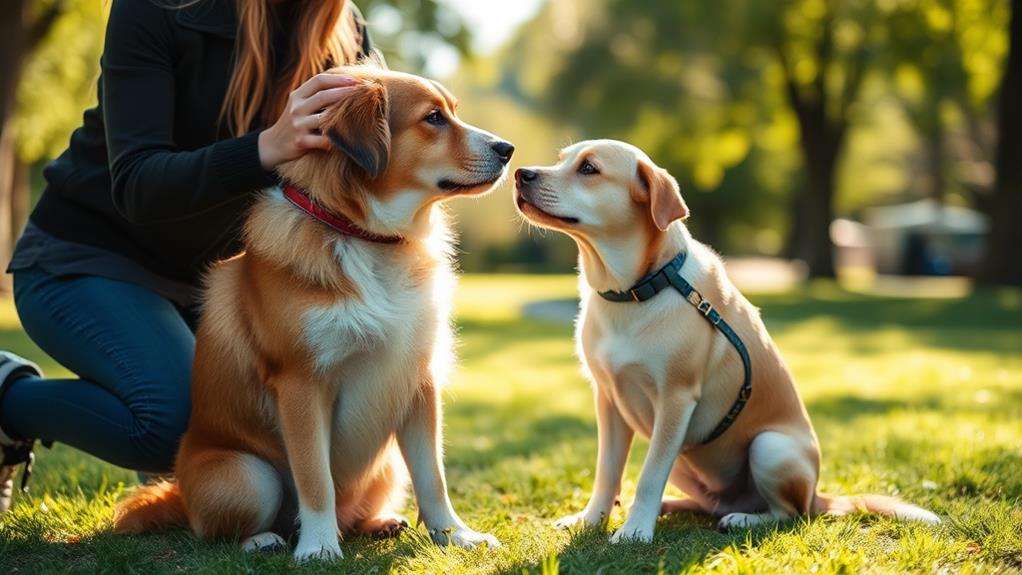
When training older pups, patience and consistency are your best allies. Unlike younger dogs, older pups have established habits and behaviors that might take time to change. You need to approach training with a calm demeanor and a steady hand. If you get frustrated, your pup will pick up on that energy, making it harder for both of you.
Set a routine for training sessions, keeping them short but frequent. Aim for sessions that last around five to ten minutes, as older pups can lose focus quickly. Consistency is key; use the same commands and cues each time, so your pup knows exactly what you expect. If you switch things up, it can confuse them and hinder progress.
Remember to celebrate small victories along the way. When your pup follows a command, give plenty of praise to reinforce that behavior. Regular practice will build their confidence and understanding of what you want. Stay committed to your training plan, and don't rush the process. With patience and consistency, you'll foster a trusting relationship with your older pup, making training a rewarding experience for both of you.
Use Positive Reinforcement
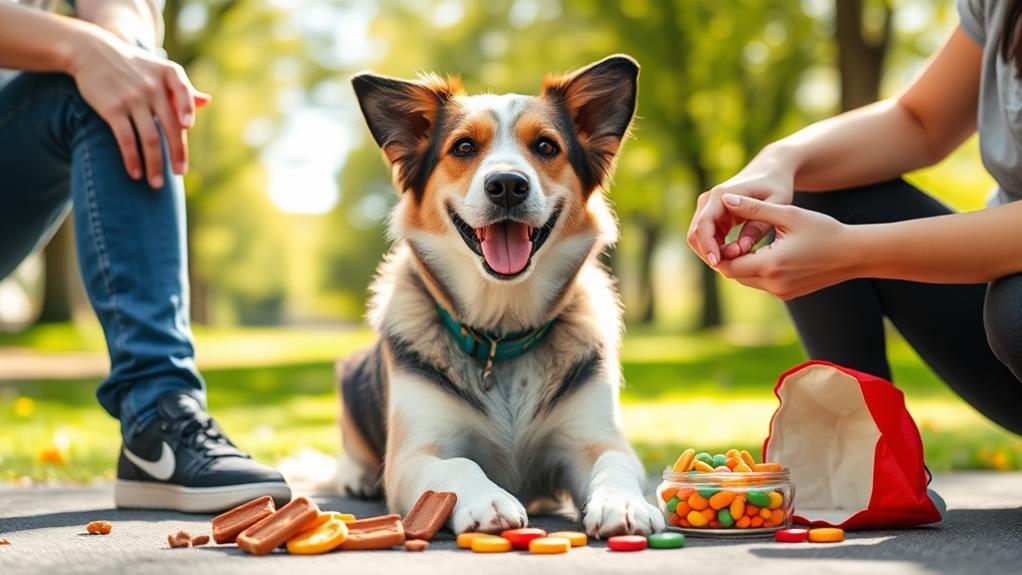
Positive reinforcement is one of the most effective methods for training older pups. This approach focuses on rewarding your dog for good behavior rather than punishing them for mistakes. By using treats, praise, or playtime, you'll encourage your pup to repeat the desired actions.
When you spot your dog doing something right, like sitting on command or not jumping on visitors, immediately reward them. This positive feedback creates a strong association between the behavior and the reward. Over time, your pup will learn that good behavior leads to pleasant outcomes.
Consistency is key here. Make sure to use the same rewards and commands each time so your dog can easily understand what you expect. Gradually, you can phase out treats as your dog learns the commands, opting for verbal praise or affection instead.
Also, keep in mind that older pups may take longer to grasp new concepts, so be patient. Celebrate small victories along the way, as they'll motivate you both. By using positive reinforcement, you're building a trusting relationship with your dog, making training a more enjoyable experience for you both.
Keep Training Sessions Short
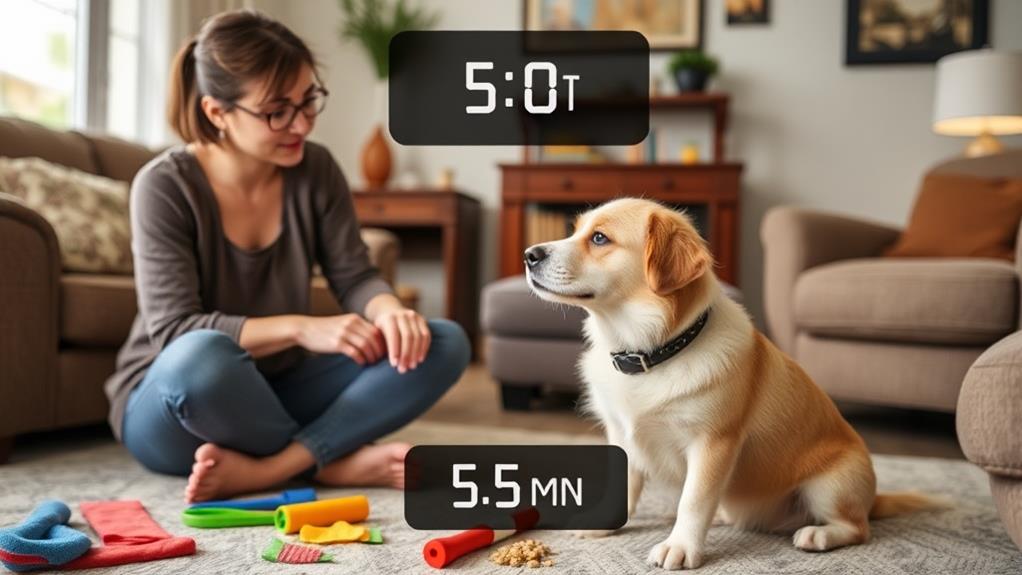
Many dog owners find that keeping training sessions short is essential for older pups. Older dogs may have shorter attention spans and can become easily overwhelmed.
By limiting your training sessions to about 5 to 10 minutes, you'll keep your pup engaged and enthusiastic to learn.
Focus on one command: Concentrate on teaching a single command at a time to avoid confusion.
Use breaks wisely: Incorporate short breaks during training to allow your pup to process what they've learned.
End on a positive note: Always finish with a successful command, followed by praise, so your dog associates training with positive outcomes.
Be consistent: Consistent short sessions spread throughout the week can be more effective than longer, infrequent ones.
Choose the Right Environment
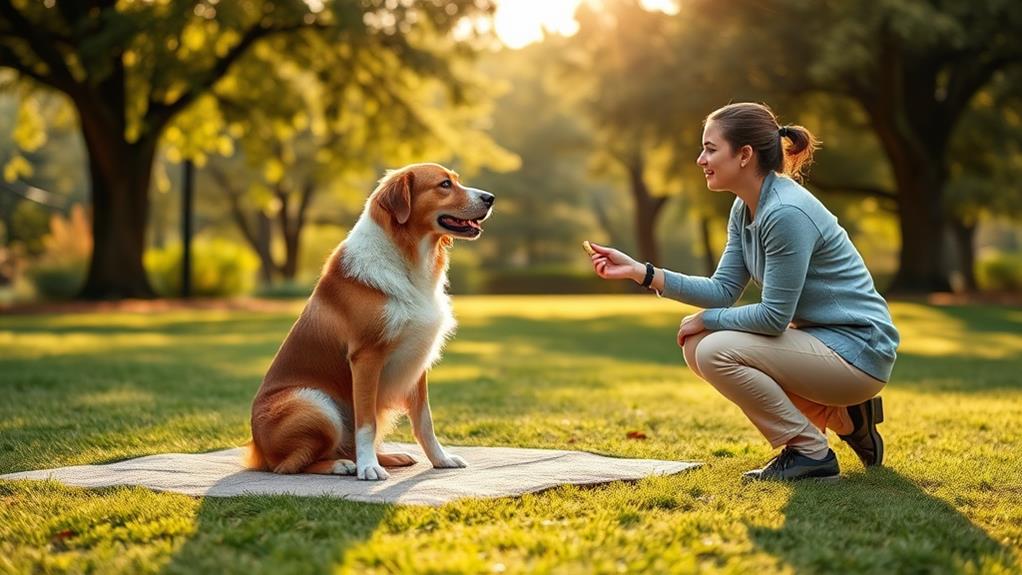
Choosing the right environment for training your older pup is essential to success. A calm and distraction-free space helps your dog focus on you and the commands you're teaching. Consider starting indoors, where you can control the surroundings. A quiet room with minimal distractions allows your pup to concentrate better on the training.
Once your dog is comfortable with the basics, you can gradually introduce more challenging environments. Outdoor spaces, like a quiet park, can be great for practicing commands, but make sure it isn't too busy or noisy. Too much stimulation can overwhelm your pup and hinder their learning.
Timing is also important; choose a time when you know the area will be less crowded. If your dog gets easily distracted, keep training sessions short and sweet, gradually building up their confidence in different settings. Remember to reward your pup for good behavior, reinforcing the positive experience of training in varied environments.
Lastly, pay attention to your dog's body language. If they seem stressed or distracted, it might be time to retreat to a quieter space. Patience and a supportive environment are key to successful training.
Incorporate Daily Exercise
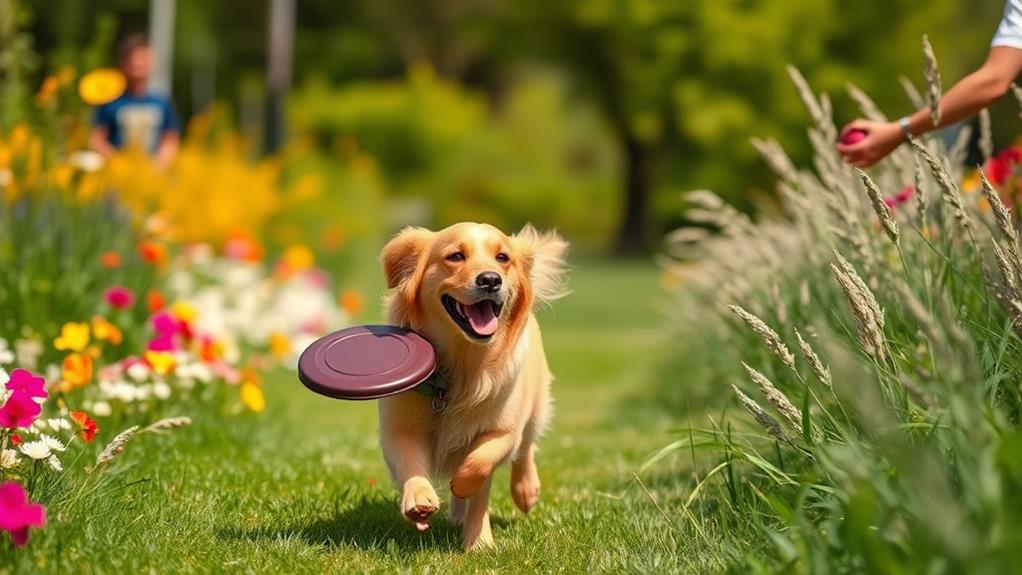
A well-rounded training routine for your older pup should include regular exercise alongside the right environment. Engaging in daily exercise not only keeps your dog physically fit but also enhances their mental well-being. It helps to reduce anxiety and boredom, which can lead to unwanted behaviors.
Short Walks: Aim for multiple short walks throughout the day instead of one long trek. This keeps them active without overexerting them.
Interactive Play: Use toys that encourage your dog to move around, like fetch or tug-of-war, to make playtime more stimulating.
Puzzle Toys: Engage their mind with toys that dispense treats, combining physical activity with mental challenges.
Swimming: If your pup enjoys water, swimming is a low-impact way to exercise that's easy on their joints.
Adjust Commands for Age
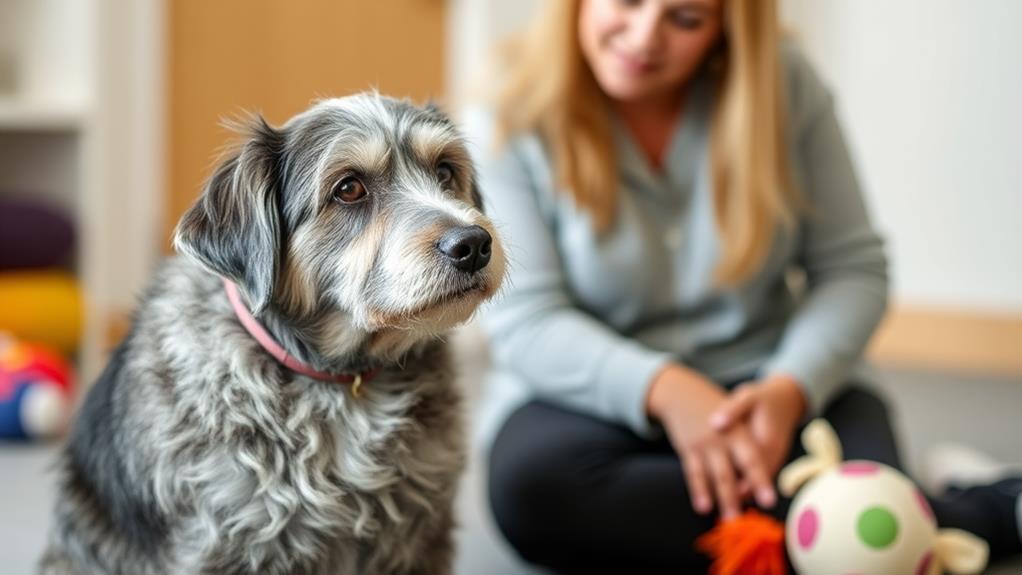
Adjusting commands for your older pup can greatly improve their training experience. As dogs age, their physical and cognitive abilities may change, so it's essential to adapt your approach.
Start by simplifying commands. Instead of using multiple words, opt for shorter, clearer phrases. For instance, instead of saying "Come here," you might just say "Come." This makes it easier for your pup to understand and respond.
Next, consider your pup's physical condition. If they've mobility issues, modify commands to be less demanding. For example, instead of asking them to "Sit" for long periods, encourage them to "Lay down," which might be more comfortable. Always accompany commands with positive reinforcement, like treats or praise, to keep them motivated.
Additionally, be aware that older pups may need more time to process commands. Patience is key. If they seem confused or slow to respond, give them a moment before repeating the command.
Focus on Socialization
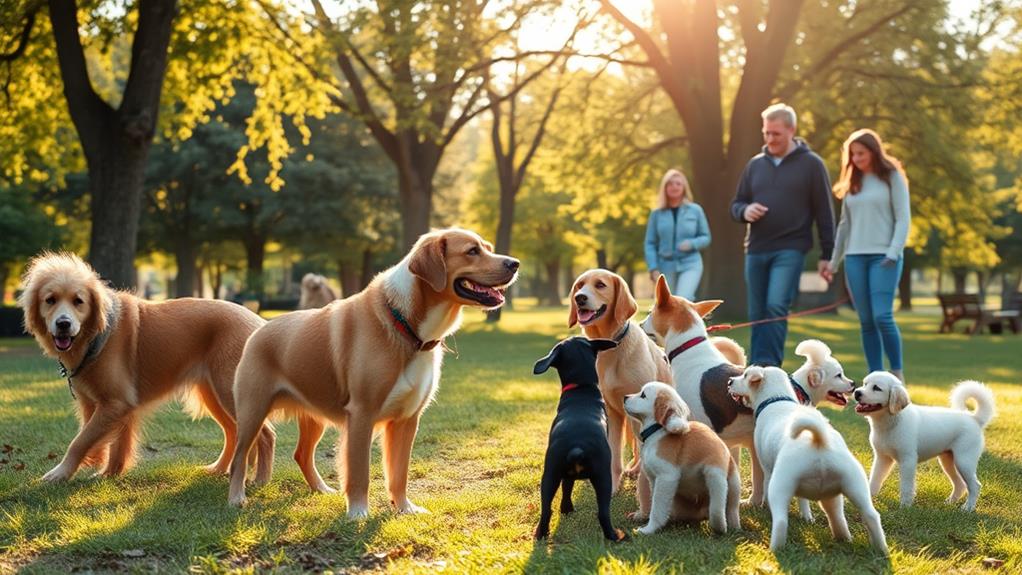
Training your older pup isn't just about commands; socialization plays a critical role too. It helps your dog feel comfortable in various environments and around different people and animals. This is especially important for older dogs who may have developed certain fears or anxieties over time.
To enhance your pup's social skills, consider these strategies:
- Expose Them Gradually: Introduce your dog to new situations slowly, ensuring they feel safe and secure during the process.
- Positive Reinforcement: Reward your pup with treats and praise when they handle new experiences well, creating positive associations.
- Group Classes: Enroll your dog in socialization classes designed for older pups. This provides a controlled environment to meet other dogs and people.
- Regular Outings: Take your dog to parks, pet-friendly stores, or dog-friendly events. These outings help them practice their social skills in real-life situations.
Use Familiar Items
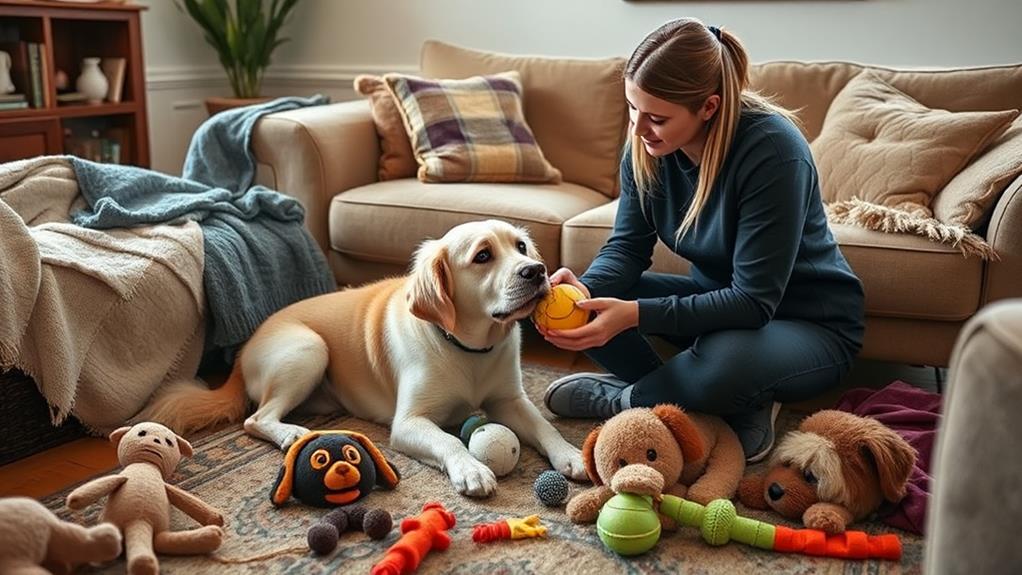
Often, incorporating familiar items into your older pup's training can make a significant difference. When you use objects your dog already knows and loves, it creates a sense of comfort and trust. This familiarity can lead to more effective learning and better engagement during training sessions.
Start by selecting toys, blankets, or even clothing that carry your pup's scent. These items can help reduce anxiety, making your older dog more receptive to new commands and routines. For instance, if your dog has a favorite toy, use it as a reward during training. This not only motivates them but also reinforces positive behavior.
Additionally, consider using familiar commands or cues that your pup has heard before. Consistency is key, so if you've used certain phrases in the past, stick to them. This way, your dog won't be confused by new terms and will feel more at ease.
Set Realistic Goals
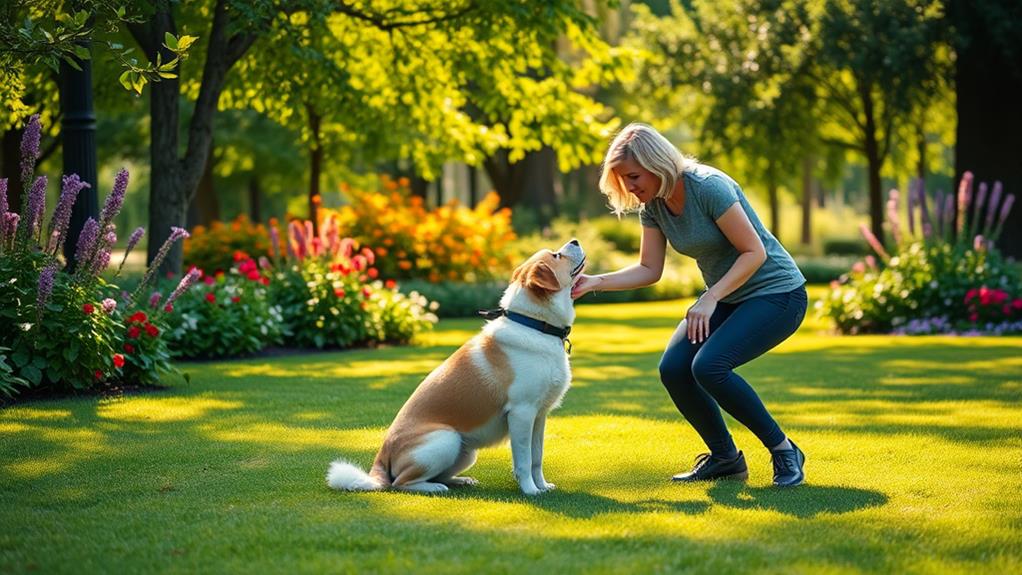
When it comes to training older pups, how do you guarantee that your goals are achievable? Setting realistic goals is vital for a successful training experience. Remember, your older pup may have different abilities and learning speeds compared to younger dogs. By focusing on attainable objectives, you'll create a positive learning environment for both of you.
Break it Down: Instead of aiming for a complex command, start with simple cues and gradually increase difficulty.
Be Patient: Understand that learning takes time. Celebrate small victories to keep motivation high.
Consider Age and Health: Tailor your goals to fit your pup's physical condition and energy levels. Don't push them too hard.
Stay Flexible: Adjust your goals as needed. If your pup struggles with something, it's okay to revisit and modify your approach.
Monitor Health and Well-being
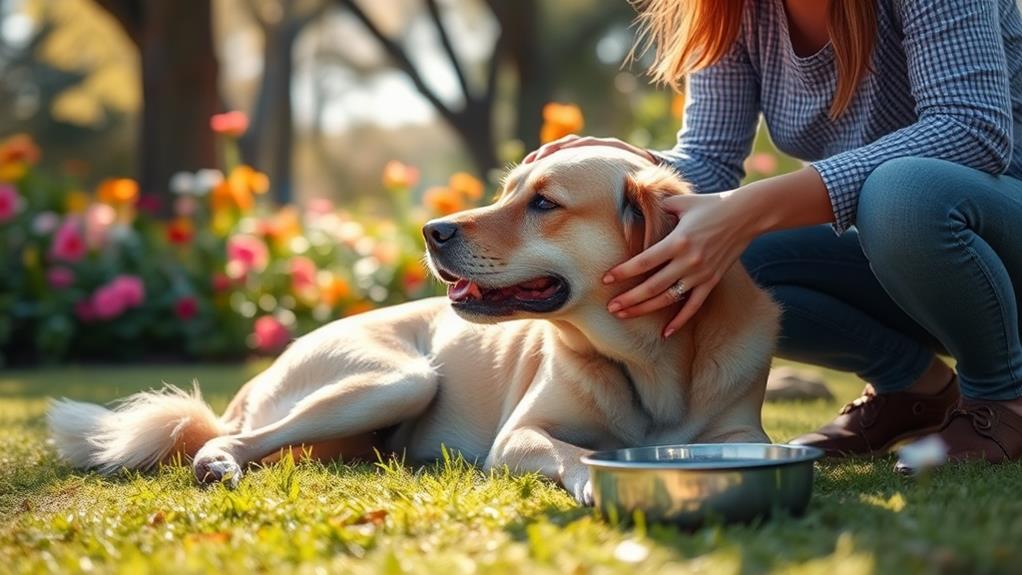
Keeping a close eye on your older pup's health and well-being is essential for effective training. A senior dog may face various health challenges, from arthritis to dental issues, which can impact their ability to learn and engage. Regular vet check-ups can help you spot any underlying conditions early, ensuring your pup stays in peak condition.
Watch for changes in behavior, appetite, or energy levels. If your pup suddenly seems lethargic or reluctant to participate in activities, it could signal a health issue. Addressing these concerns promptly won't only help your dog feel better but also improve their responsiveness during training sessions.
Additionally, consider their physical limitations. Adjust training activities to accommodate any mobility issues, and incorporate gentle exercises that keep them active without overexerting them. Keeping sessions short and positive can maintain your pup's enthusiasm while respecting their age.
Lastly, provide a balanced diet tailored to their needs. Nutrition plays a pivotal role in overall health and can directly affect training success. By monitoring your older pup's health and well-being, you'll foster a supportive environment that enhances their learning experience.
Frequently Asked Questions
How Do I Deal With Stubborn Behaviors in Older Dogs?
Dealing with stubborn behaviors in older dogs can be challenging. You'll need patience and consistency. Use positive reinforcement, break tasks into smaller steps, and stay calm. Over time, your dog will likely respond better to your cues.
Can Older Dogs Learn New Tricks?
Absolutely, older dogs can learn new tricks! Contrary to some beliefs, their brains remain adaptable. With patience, consistency, and positive reinforcement, you'll find your pup enthusiastic to engage and learn, no matter their age.
What Are Signs of Cognitive Decline in Senior Dogs?
You might notice your senior dog forgetting commands, getting lost in familiar places, displaying changes in sleeping patterns, or showing signs of confusion. These signs often indicate cognitive decline and warrant a visit to your vet.
How Can I Manage My Dog's Anxiety During Training?
You'd think training would ease anxiety, but sometimes it adds to it. Focus on creating a calm environment, use positive reinforcement, and take breaks. Your dog needs patience, just like you do during training sessions.
Should I Adjust My Training Methods for Different Breeds?
Yes, you should adjust your training methods for different breeds. Each breed has unique traits and learning styles, so tailoring your approach guarantees better engagement and understanding, ultimately leading to a more successful training experience.
Conclusion
In summary, training older pups can be a rewarding experience if you stay patient and consistent. You might think it's too late to teach them new tricks, but the truth is that older dogs are just as capable of learning as younger ones. With positive reinforcement and the right approach, you can strengthen your bond and help them thrive. So grab those treats and get started—your pup's never too old to learn something new!

